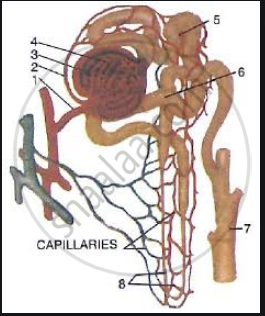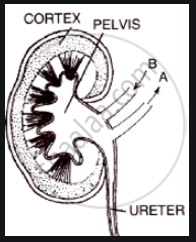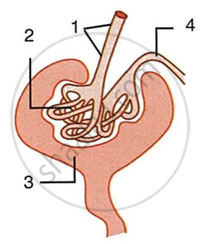Advertisements
Advertisements
Question
What is the function of excretory system in humans?
Solution
The main function of excretory system is to remove waste and harmful by-products of the normal metabolic processes from the body.
APPEARS IN
RELATED QUESTIONS
Bile, Urea, Uric acid, Ammonia
Mention the exact location of the Prostate gland.
Name an animal which absorbs oxygen through its moist skin.
State whether the following statement is true or false:
Some organisms store wastes in body parts.
State if the following statement is true or false. Correct the statement if it is false.
Liver produces bile pigments from the hemoglobin of broken RBCs.
Fill in the blank.
Malpighian body consists of Bowman’s capsule and .....................
Fill in the blank.
....................... are present in the stem of pine tree that make the pinewood strong and durable.
Differentiate between the following pairs of term :
Renal cortex and renal medulla
Fill in the blanks in the following passage to make it a meaningful description.
In a nephron, the ______ flows through the ______ under great pressure. The reason for this great pressure is that the ______ (outgoing) ______ is narrower than the ______ (incoming). This high pressure causes the ______ part of the blood to filter out from the ______ into the ______ capsule.
The following diagram represents a mammalian kidney tubule (nephron) and its blood supply.

Parts indicated by the guidelines 1to 8 are as follows:
1. Afferent arteriole from renal artery
2. Efferent arteriole
3. Bowman's capsule
4. Glomerulus
5. Proximal convoluted tubule with blood capillaries
6. Distal convoluted tubule with blood capillaries
7. Collecting tubule
8. U-shaped loop of Henle
Study the diagram and answer the question that follow:
Which structure contains the lowest concentration of urea?
Given below is a highly simplified diagram of the human kidney cut open longitudinally. Answer the question that follow:
Name the functional units of the kidneys.

Study the diagram given below and then answer the questions that follow:
 |
- Name the region in the kidney where the above structure is present?
- Name the parts labelled 1, 2, 3 and 4.
- Name the stages involved in the formation of urine.
- What is the technical term given to the process occurring in 2 and 3? Briefly describe the process.
The diagram below represents a mammalian kidney tubule (nephron) and its blood supply. Parts indicated by the guidelines 1 to 8 are as follows:
1. U-shaped loop of Henle
2. Proximal convoluted tubule with blood capillaries
3. Bowman’s capsule
4. Afferent arteriole from the renal artery
5. Glomerulus
6. Venule to the renal vein
7. Collecting tubule
8. Distal convoluted tubule with blood capillaries Study the diagram and answer the following questions in each case:
(i) Where does ultrafiltration take place?
(ii) Which structure contains the lowest concentration of urea?
(iii) Which structure contains the highest concentration of urea?
(iv) Which structure contains the lowest concentration of glucose?
(v) Where is the most water reabsorbed?
Explain the Term: Ureter
Give Technical Term:
The organ which filters out urea and uric acid from the bloodstream.
Choose the Odd One Out:
The number of ATP molecules required to produce one molecule of urea from the omithine cycle.
Two green plants are kept separately in oxygen-free containers, one in the dark and the other in continuous light. Which one will live longer? Give reasons.
Give two examples of the following:
Main excretory organs
The process of removal of unwanted metabolic wastes from the body is called ______.
